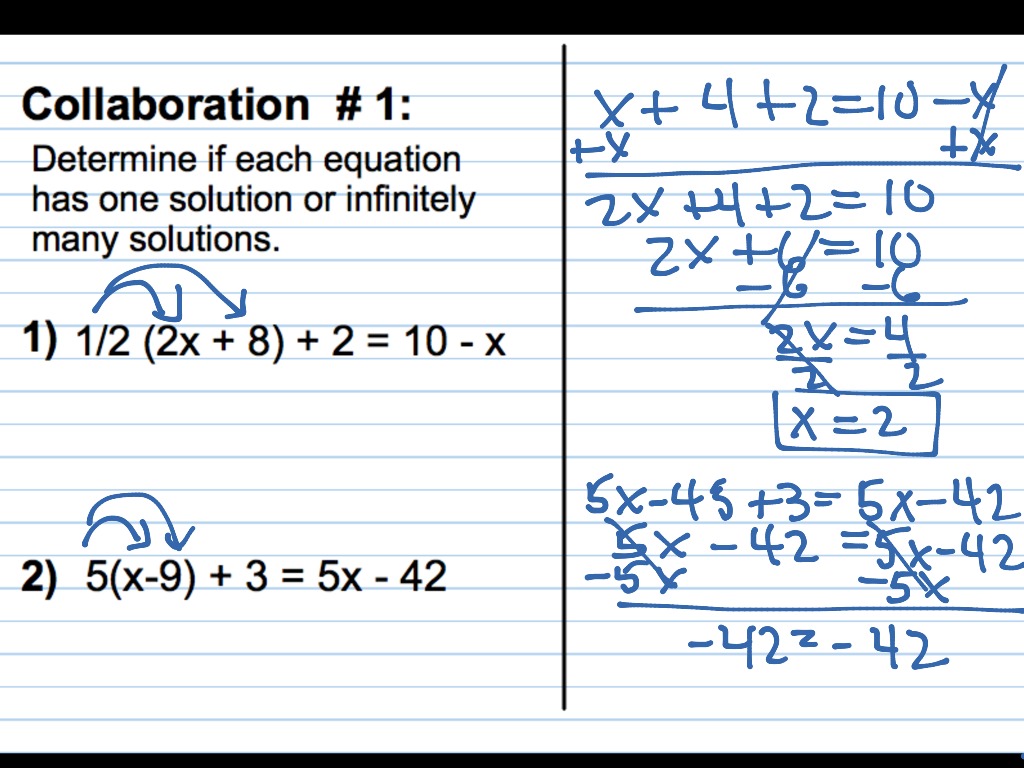Equations With Infinite And No Solutions Worksheet Answers Tessshebaylo

Equations With Infinite And No Solutions Worksheet Answers Tessshebaylo When choosing a charcoal grilling fuel, there's a lot to consider. see the five types of charcoal that's out there, and what they bring to the table. Types of charcoal the first step in choosing charcoal is understanding the two main types of charcoal on the market: lump charcoal and briquette charcoal. lump charcoal lump charcoal comes from whole pieces of kiln fired natural wood. it’s typically irregular in shape, with different brands carrying different sizes of chunks.

Equations With Infinite And No Solutions Worksheet Tessshebaylo The five different types of charcoal discussed in this article are lump charcoal, charcoal briquettes, hardwood briquettes, coconut shell charcoal, and binchotan. their primary use is for grilling and smoking, with each type offering unique characteristics in terms of heat output, burn time, and flavor. The five types of charcoal and how to choose between them if you have a napoleon charcoal or gas barbecue with the optional charcoal tray accessory, you’ll know that this traditional grilling method is an exciting way of enhancing the flavors of your food. once the charcoal lights up, the signature aroma of barbecue rises to ignite your appetite. Types of charcoal: which one to use with your grill? wondering about the different types of charcoal and what to use them for? this article tells you everything you need to know. Classification of charcoal types different charcoal types are produced depending on the raw material and method used. each type has unique characteristics suited to particular applications. black charcoal: produced through traditional and modern slow burn techniques; commonly used for grilling and household fuel.

Equations With Infinite And No Solutions Worksheet Tessshebaylo Types of charcoal: which one to use with your grill? wondering about the different types of charcoal and what to use them for? this article tells you everything you need to know. Classification of charcoal types different charcoal types are produced depending on the raw material and method used. each type has unique characteristics suited to particular applications. black charcoal: produced through traditional and modern slow burn techniques; commonly used for grilling and household fuel. The two types of charcoal are charcoal briquettes and lump hardwood. here's when to use each type depending on what you're grilling. Learn about the different types of charcoal, like lump hardwood charcoal, briquettes, binchotan and coconut shell charcoal, and which is best for your grill. This charcoal is known for its hard, dense quality and high porosity compared to other types of vegetable charcoal. recognize the benefits: coconut charcoal is all natural and eco friendly. its production has a minor environmental footprint, making it a preferred choice for a sustainable future. Charcoal briquettes are made up of the finely broken up pieces of coal and a variety of additives are mixed in to act as binder which holds the charcoal briquette together. examples of these additives include wood charcoal, limestone, starch and sawdust. some briquettes also have lighter fluid added to make it easier to set on fire.

Equations With Infinite And No Solutions Worksheet Tessshebaylo The two types of charcoal are charcoal briquettes and lump hardwood. here's when to use each type depending on what you're grilling. Learn about the different types of charcoal, like lump hardwood charcoal, briquettes, binchotan and coconut shell charcoal, and which is best for your grill. This charcoal is known for its hard, dense quality and high porosity compared to other types of vegetable charcoal. recognize the benefits: coconut charcoal is all natural and eco friendly. its production has a minor environmental footprint, making it a preferred choice for a sustainable future. Charcoal briquettes are made up of the finely broken up pieces of coal and a variety of additives are mixed in to act as binder which holds the charcoal briquette together. examples of these additives include wood charcoal, limestone, starch and sawdust. some briquettes also have lighter fluid added to make it easier to set on fire.
Comments are closed.